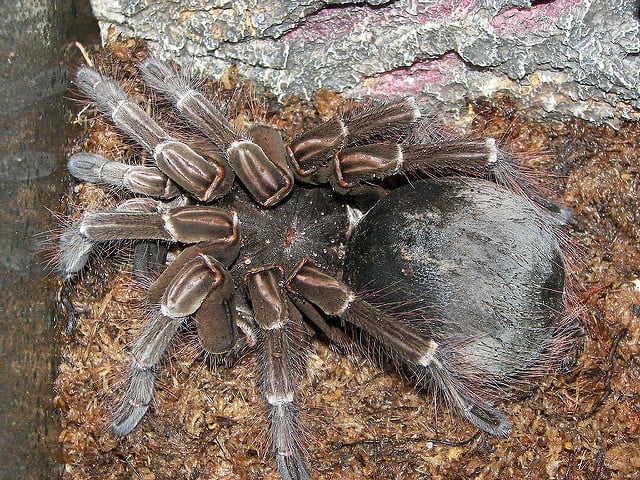
If you shriek in fear at the sight of the tiniest of spiders, you may want to avoid the rainforests of Suriname, Guyana, northern Brazil and southern Venezuela, where the Goliath birdeater dwells! Listed in the Guinness World Records as the world's biggest spider, the terrifying-looking arachnid weighs a hefty six ounces, (almost the same weight as a newborn puppy), and has a leg span that extends out 11-inches (the size of a child's forearm).
The giant terrestrial creatures that belong to the Tarantula family, live inside deep burrows in marshy or swampy areas are nocturnal and take between 3 to 6 years to mature. Though the males die soon after, females can live for up to 25 years.
And while they are known as "birdeaters", the arachnids feed largely on earthworms, frogs and any other insects they come across. But according to Piotr Naskrecki, entomologist and photographer at Harvard University's Museum of Comparative Zoology, it is not because they are are unable to kill birds, but only because the spiders rarely encounter them on the ground when they come out to feed at night. According to the expert, the spiders have been known to kill chicks and even puncture eggs and drink the contents, if they stumble upon a nest.
Clearly, this spider is no gentle giant, but a vicious creepy-crawly. According to Naskrecki who has encountered them three times, it makes a distinct clicking sound as it stomps around looking for prey amongst the leaf litter in the darkness of the night
Goliath Birdeaters defend themselves from predators in one of three ways. It begins by making hissing sounds similar to the sound of Velcro being pulled apart. If that does not scare them away, the spider releases clouds of tiny barbed hairs that pierce the eyes and mucous membrane of the enemy causing extreme pain and itching for many days. For those that refuse to budge, the fearsome creature pulls out its last line of defense - two-inch long fangs that are strong enough to pierce a mouse's skull. What's worse is that the fearsome creatures are difficult to maim or kill thanks to their ability to regenerate damaged or lost limbs, throughout their lives.

The good news is that the chances of encountering a Goliath birdeater are extremely rare and the only reason Naskrecki has even seen them is because he is brave enough to walk the rainforests alone, in the darkness of the night. If that is not enough to impress you, how about this? In 2012, the nature lover captured a live specimen in Guyana and brought it back to his laboratory in Massachusetts. After examining it, he donated it a museum for all to admire (or fear)!
While the Goliath birdeater is definitely the world's largest spider by weight, it is the Giant Huntsman spider that takes the award for being the largest by diameter. The lanky arachnids have a leg span of up to 12-inches (30 centimeters) or as some people describe it "the size of a dinner plate". Though not as vicious as the Goliath birdeaters, their bites can be painful. Fortunately, these too are rarely encountered by humans.
Resources: news.yahoo.com, livescience.com